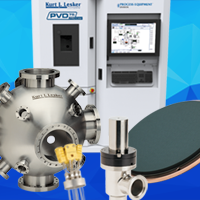What is Torlon® AI?
Torlon® AI is a family of soluble polyamide-imides sold in powder form. The polymer is tough, chemically resistant, and thermally stable. It has thermal capability similar to many polyimides, at a lower price. Coatings based on AI polymers have been shown to be cost-effective in electrical/electronic, high-temperature decorative, and corrosion prevention applications.
Torlon® AI is available in water-soluble versions that possess exceptional mechanical, thermal, chemical resistance as well as wear-resistant properties.
Torlon® resins are inherently non-flammable, have outstanding electrical properties, and possess enormous temperature stability from cryogenic to 300°C and some grades are FDA compliant.
Why use Torlon® AI?
- Superior chemical resistance
- Better adhesion in saltwater boiling tests
- Lower viscosity for easier processing
- Improved scratch resistance
- Withstands temperatures up to 288ºC
See below for a list of downloadable brochures and more.
SDS Files
Torlon® 4000 TF
Torlon® AI 10
Torlon® AI 10LM
Torlon® AI 50
Torlon® AI 30
Technical Data Sheets
Torlon® AI 10LS
Torlon® AI 10LM
Torlon® AI 30LM
Torlon® AI 50
Torlon® 4000T LV MV HV
Torlon® 4000TF
Torlon® AI 10
Brochures
Torlon® AI-10
Torlon® AI-10 powder has an impressive record of proven performance in high-temperature coatings and adhesives. These include electrical wire coatings, corrosion-resistant coatings, non-stick cookware coatings, and industrial low-friction coatings.Torlon® AI-10 is soluble in dipolar aprotic solvents such as N-methyl pyrrolidone (NMP), dimethylacetamide (DMAC), dimethylformamide (DMF) and dimethylsulfoxide (DMSO) to at least 35% solids. Mixtures of these solvents with other diluents are possible. Cast solutions are thermally cured up to 250-300°C (480-570°F) to achieve maximum performance properties. Please see Torlon® AI-10 Coatings for more information.
Torlon® AI-10 LM
Torlon® AI-10 LM is similar to Torlon® AI-10 in that it is produced using the same monomers and polymerization system. However, the manufacturing process has been optimized to reduce the amount of residual methylenedianiline (MDA) monomer to below the 1,000 ppm action level specified in various hazard communication regulations.Torlon® AI-10 LM can be substituted for Torlon® AI-10, without any changes in formulation or process. Coatings based on the Torlon® AI-10 or AI-10 LM polymer yield durable, abrasion-resistant, thermally stable films.
Torlon® AI-30
Torlon® AI-30 is the water-soluble analog of Torlon® AI-10 and consists of 35% solids, 63% water and 2% NMP. It is made water soluble by forming an ammonium salt with the amic acid groups on the polymer backbone. Aqueousbased solutions made with Torlon® AI-30 have inherently low VOCs, which helps end users meet stringent environmental regulations. Cast solutions are thermally cured at temperatures up to 250-300°C (480-570°F) for maximum performance properties.Torlon® AI-50
Torlon® AI-50 is the water soluble analog of 4000TF. It is similar to Torlon® AI-30 in solids composition, yet offers a lower viscosity and the associated processing advantages. Cast solutions are thermally cured up to 250-300°C (480-570°F) for maximum performance properties.Torlon® 4000T, Torlon® 4000TF
Torlon® 4000T differs from AI-10 in that it is made from different diamines and has a greater degree of imidization. Methylenedianiline (MDA) is not used in the manufacture of Torlon® 4000T resins. Similar to Torlon® AI-10, this material is soluble in dipolar aprotic solvents such as NMP, DMAC, DMF, and DMSO to at least 35% solids. Cast solutions are thermally cured up to 250-300°C (480-570°F) to achieve maximum performance properties.It is available in four powder grades, 4000T-LV, 4000T-MV, 4000T-HV, and a finer particle size version, 4000TF. Torlon® 4000TF is a fine powder with 95% of the particles less than 75 microns. Torlon® 4000TF should be used when a defined particle size is important.
|
|
AI-10 | AI-10 LM | AI-30 | AI-50 | 4000 T-LV | 4000 T-MV | 4000 T-HV | 4000 TF |
|---|---|---|---|---|---|---|---|---|
| Form | yellow powder | yellow powder | wet yellow powder | wet yellow powder | yellow powder | yellow powder | yellow powder | fine yellow powder |
| Solids content % | 90 | 92 | 35 | 35 | 99 | 99 | 99 | 99 |
| Solution viscosity, 25% in NMP, cP | 800(2) | 850(2) | 7,000(3) | 42,000(3) | 85,000(3) | 7,000 | ||
| Solution viscosity, 7% in water, cP | 650(2) | 20(2) | ||||||
| Acid number, mg KOH/g of polymer | 80 | 82 | 125 | 125 | 20 | 15 | 10 | 20 |
Pigments & Additives
Pigments and additives can be used in conjunction with Torlon® coating resins to produce special purpose coating and adhesive formulations. Suitable additives of this type include heat-stable organic and inorganic pigments, fillers, and certain epoxy and fluoropolymer copolymers. Due to the inherent color of Torlon® coating resins, care must be taken if white or very pale shades are to be successfully formulated.
To prevent the absorption of unwanted moisture, all pigments should be ground in closed milling equipment. Likewise, hydroscopic additives, such as fibers, copolymers, etc, should be dried to appropriate moisture levels prior to being incorporated into the formulation.
Processing
Torlon® PAI-based coatings can be effectively applied by spray, roll, spin, or curtain techniques. Usually, dry film thicknesses from 10-20 µm are readily achieved in a single coating pass. Greater film thicknesses can be achieved by applying multiple coats.
Regardless of the method employed, it is essential to assure appropriate preparation of the substrate prior to application of coating. Once complete, application equipment should be purged of coating and cleaned with a true solvent.
What is the shelf life of Torlon® AI?
Torlon® has a shelf life of at least 3 years if stored under dry, ambient conditions in its original undamaged packaging.
What is the difference between Torlon® AI-10 and Torlon® AI-10LM?
Torlon® AI-10 LM is similar to Torlon® AI-10 in that it is produced using the same monomers and polymerization system. However, the manufacturing process has been optimized to reduce the amount of residual methylenedianiline (MDA) monomer to below the 1,000 ppm action level specified in various hazard communication regulations.
What is the difference between Torlon® AI-10 and Torlon® 4000T?
Torlon® 4000T differs from AI-10 in that it is made from different diamines and has a greater degree of imidization. Methylenedianiline (MDA) is not used in the manufacture of Torlon® 4000T resins.
Are there different grades of Torlon® 4000T available?
Yes, Torlon® 4000T is available in Low Viscosity (LV), Medium Viscosity (MV), and High Viscosity (HV) grades. There is also a fine powder version: 4000TF.
What is the difference between Torlon® 4000T and Torlon® 4000TF?
Torlon® 4000TF is a fine powder with 95% of the particles less than 75 microns should be used when a defined particle size is important.
Torlon® 4000T is a a coarse powder version available in 3 viscosity grades:
Low viscosity: 4000T-LV
Medium Viscosity: 4000T-MV
High Viscosity: 4000T-HV
How can Torlon® PAI-based coatings be applied?
Torlon® PAI-based coatings can be effectively applied by spray, roll, spin, or curtain techniques.
Is there a water-soluble version of Torlon® AI-10 available?
Yes. Torlon® AI-30 is the water-soluble analog of Torlon® AI-10 and consists of 35% solids, 63% water and 2% NMP. It is made water soluble by forming an ammonium salt with the amic acid groups on the polymer backbone.
Is there a water-soluble versionof Torlon® 4000TF available?
Yes. Torlon® AI-50 is the water soluble analog of 4000TF. It is similar to Torlon® AI-30 in solids composition, yet offers a lower viscosity and the associated processing advantages.
In what form are Torlon® AI products available?
Torlon® AI products, which include AI-10, AI-10LM, AI-30, AI-50, 4000T-LV, 4000T-MV, 4000T-HV, and 4000TF are all available in powder form.
Can pigments and additives be used with Torlon® coating resins?
Yes. Pigments and additives can be used in conjunction with Torlon® coating resins to produce special purpose coating and adhesive formulations. Suitable additives of this type include heat-stable organic and inorganic pigments, fillers, and certain epoxy and fluoropolymer copolymers.



